About Canon Flash
IR Misconceptions
The Canon EX flash system is a family of hot shoe flashes designed to operate with wireless binary coded optical remote control of slaves. It is a system which has evolved over the years and there is a great deal of mis-information floating around on the Internet about how it works. The most misleading is the assertion its range is limited because it uses IR (Infrared Light) for signaling, usually in the context of suggesting radio triggering as a better alternative.
Why doesn't the Canon system use radio triggering? The problem is more political than technical. Radio frequencies are controlled by each country or in the case of the EU zone regionally. Before things like the Wi-Fi and Bluetooth standards it was a bureaucratic quagmire to get a radio based product approved. Optical was cheaper and simpler to implement. There are rumors Canon is currently working on a new Wi-Fi based control system. Why IR for signaling? Canon hasn't to my knowledge explained the rationale for using it but likely it is to reduce interference from other visible light sources during signaling. The actual commands are binary coded pulses but any brighter nearby source can blind the slave by overpower the the Master's signal. Where I suspect people get confused about the IR is thinking the source are the LEDs under the big red lens on the front of the flash because they don't see the pre-flashes. Experience with LED devices like TV remotes then cause some to jump to the conclusion that Canon flash is similarly range limited when in fact is has an effective range of 40-50ft indoors and 25-30 outdoors. The source of the IR on all Master devices except the ST-E2 is the main flash tube. The flash tube emits both visible light we can see and IR energy we can't see. The pre-flashes occur between the time the shutter is fully pressed and the mirror flips up blocking the viewfinder. The main exposure occurs while the mirror is blocking the viewfinder and the shutter is open. So any flash noticed in the viewfinder is actually the visible portion of the pre-flashes. The filtering out of the visible light from the pre-flash for the IR based signaling occurs when the light reaches the Slave flash: the window over the Slave sensor is a filter which blocks the visible light. The ST-E2 also is flash tube based but there is a filter over it to cut out most of the visible output. How does the signaling / metering work? The Master sends each group a coded signal to to pre-flash separately: A then B then C (if used). The metering then evaluates how each group illuminates the various metering zones on the viewfinder. Canon doesn't reveal exactly how it works but this is my best guess: pre-flashes are same % of total capacity so regardless of whether a group B slave is a 580ex or 430ex, so when it gets the command to fire its pre-flash the slave will output perhaps 20% of its total capacity. The camera memory stores the zone map from each group pre-flash and compares them to determine where they overlap to create a lighting ratio. Then based on the relative pre-flash intensities it computes the amount of power needed to create the A:B ratio input on the dial. For example an A:B ratio of 1:2 tells the camera to make the brightest spot B hits reflect 2x more light (1-stop) than A in the same spot. The master then signals each group to fire a X% of total capacity relative to the pre-flash baseline just after the shutter fully exposes the sensor. The small amount of light final pre-flash command may be visible in some photos where the main flash is disabled but in most cases the main flash exposure from the Master masks it. The big red lens and LEDs? That the AF assist light which play no role in control or metering. But when the flash is put in Slave mode it blinks as ready light. If the AF assist light is not seen from the camera position it means that either the flash is recharging or it is facing the wrong direction. The Slave sensor is directly above the AF assist so if you don't see the blinking assist light then the Slave is unlikely to see the light from the Master and signaling will be adversely affected. Why did Canon switch signaling from purely IR with the ST-E2 to visible + IR with the 550ex and subsequent flashes? Notwithstanding the cross lighting diagram in the Canon manuals...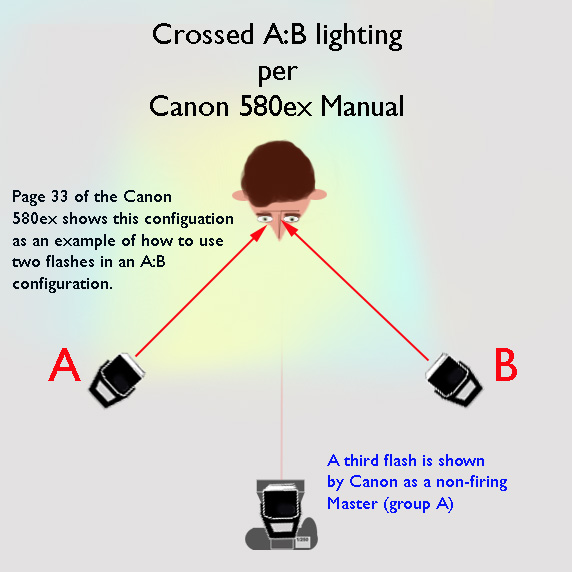 ...the more logical way to use two flashes in a Master / Slave configuration is to use the Master over the camera as nearly shadowless fill as the foundation for the lighting pattern, overlapping the key light over the fill to create the lighting ratio:
...the more logical way to use two flashes in a Master / Slave configuration is to use the Master over the camera as nearly shadowless fill as the foundation for the lighting pattern, overlapping the key light over the fill to create the lighting ratio:
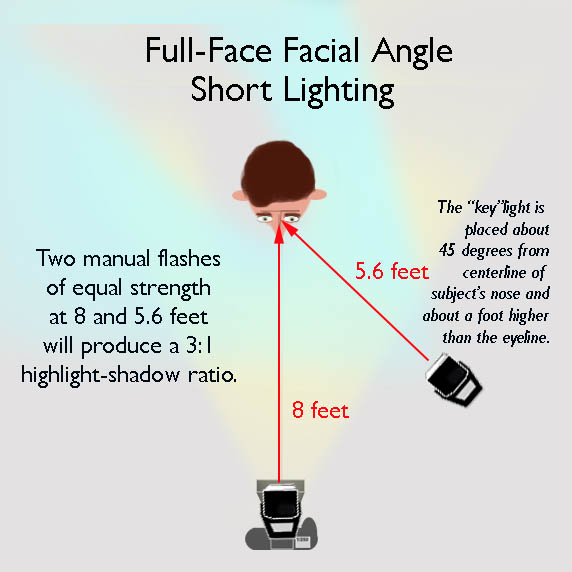 When the subject turns obliquely the fill on the bracket remains in same place but the key light moves to stay 45° from the nose...
When the subject turns obliquely the fill on the bracket remains in same place but the key light moves to stay 45° from the nose...
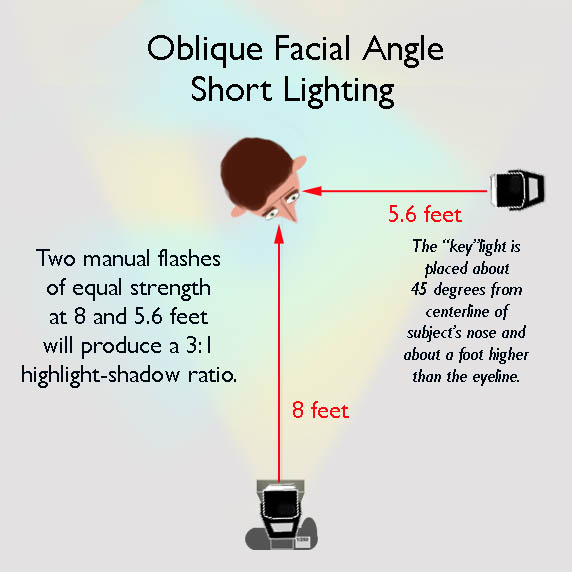 Creating an "oblique / short" lighting combination like this one...
Creating an "oblique / short" lighting combination like this one...
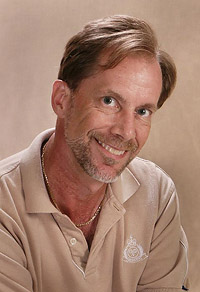 The centered fill / overlapping key strategy is how two flashes are able to fit the range of the foreground to the sensor exactly. The fill needs to be strong enough for the sensor to record detail everywhere in the deepest shadows. If not centered and shadowless there will be dark unfilled voids in the lighting pattern. The key light overlaps the fill and need to be strong enough to render solid white objects just under clipping, around 250 eyedropper reading. The only thing that should be clipping at capture when a full range is of tone is recored are specular reflections from the lights.
So simply put having a flash over the camera makes a huge amount of sense both technically to record a full range of detail and perceptually / ascetically in the way it helps to create a realistic impression of 3D in a 2D photo. Shadow gradients are not just created by the "wrap" of the key source they are the result the centered fill falling off in intensity from the tip of the nose towards the ears. Centered fill makes the nose shadow lighter and less distracting and creates darker shadows on the side with frame and draw attention to the highlighted front of the face.
The Canon OC-E3 TTL extension cord is only three feet when fully extended because it is designed primarily for just moving Master flash up out of the hot shoe to a flash bracket. Canon doesn't make a longer cord because it expects the system to be used wirelessly...
The centered fill / overlapping key strategy is how two flashes are able to fit the range of the foreground to the sensor exactly. The fill needs to be strong enough for the sensor to record detail everywhere in the deepest shadows. If not centered and shadowless there will be dark unfilled voids in the lighting pattern. The key light overlaps the fill and need to be strong enough to render solid white objects just under clipping, around 250 eyedropper reading. The only thing that should be clipping at capture when a full range is of tone is recored are specular reflections from the lights.
So simply put having a flash over the camera makes a huge amount of sense both technically to record a full range of detail and perceptually / ascetically in the way it helps to create a realistic impression of 3D in a 2D photo. Shadow gradients are not just created by the "wrap" of the key source they are the result the centered fill falling off in intensity from the tip of the nose towards the ears. Centered fill makes the nose shadow lighter and less distracting and creates darker shadows on the side with frame and draw attention to the highlighted front of the face.
The Canon OC-E3 TTL extension cord is only three feet when fully extended because it is designed primarily for just moving Master flash up out of the hot shoe to a flash bracket. Canon doesn't make a longer cord because it expects the system to be used wirelessly...
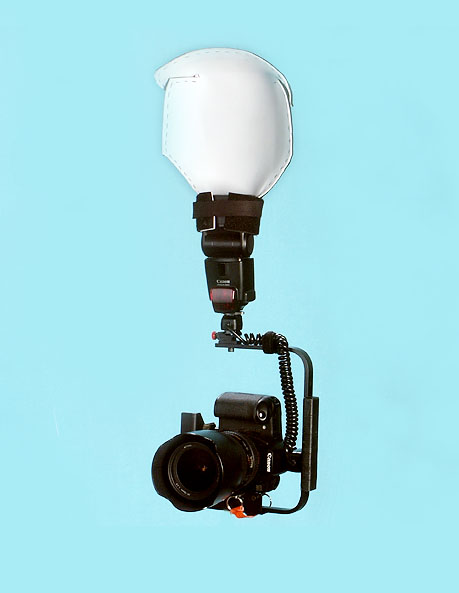 Adding a flash and bracket might seem cumbersome compared to using the ST-E2 with two stand mounted lights, but you should keep in mind that speedlights are best suited for "run and gun" shooting where the logistics of using two stands would be more cumbersome. One flash on a bracket produces very flattering "Butterfly" pattern lighting both indoors ...
Adding a flash and bracket might seem cumbersome compared to using the ST-E2 with two stand mounted lights, but you should keep in mind that speedlights are best suited for "run and gun" shooting where the logistics of using two stands would be more cumbersome. One flash on a bracket produces very flattering "Butterfly" pattern lighting both indoors ...

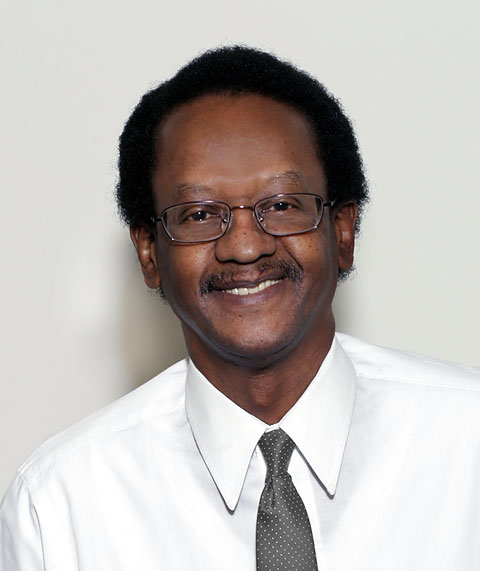 ...and outdoors.
...and outdoors.
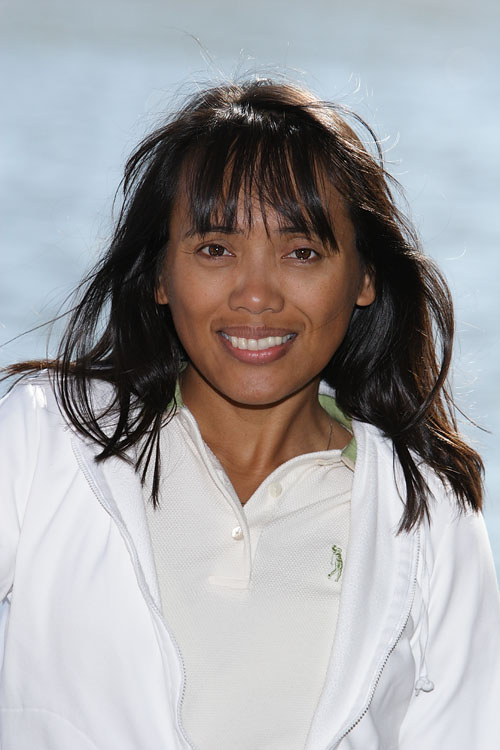 Having the Master/fill on the bracket simplifies the logistics of shooting dual flash candids because there is only one stand to wrangle. I use a modified IV stand I just wheel around 45° from the nose as in the diagram above...
Having the Master/fill on the bracket simplifies the logistics of shooting dual flash candids because there is only one stand to wrangle. I use a modified IV stand I just wheel around 45° from the nose as in the diagram above...
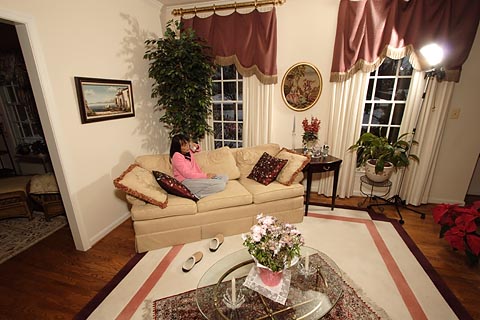 ..then walk back around and capture the face with flattering "short" lighting.
..then walk back around and capture the face with flattering "short" lighting.
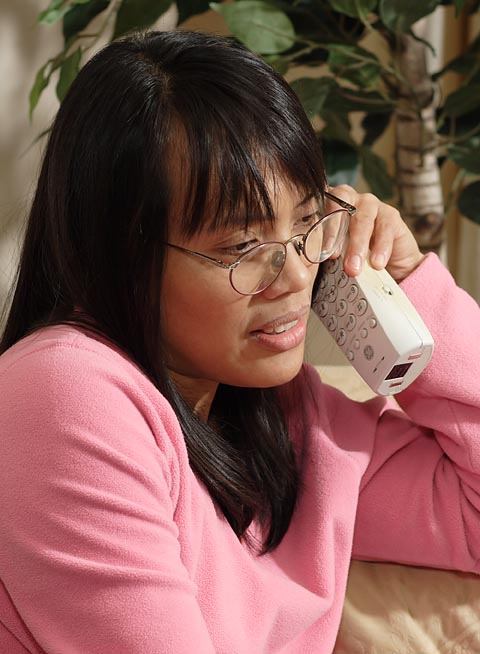
 When shooting wide scenes I'll just park the off camera flash behind the action to create 3D spacial separation relying on the Master on the bracket to provide flattering lighting in the foreground..
When shooting wide scenes I'll just park the off camera flash behind the action to create 3D spacial separation relying on the Master on the bracket to provide flattering lighting in the foreground..
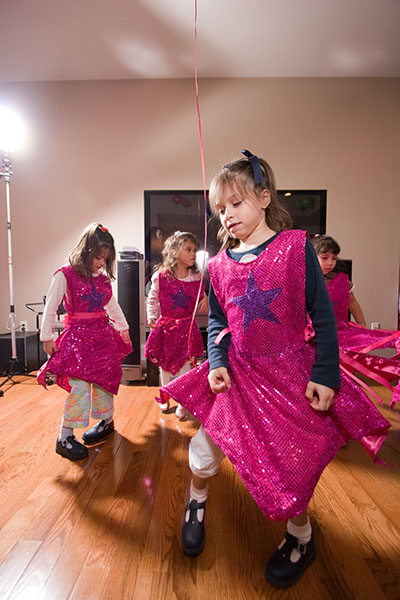

 So in most situations having a flash above the camera makes good sense and is why Masters since the 550ex have been flashes and the ST-E2 has never been updated. The 550ex added a C group for controlling background lighting and remote manual power setting. I think the best approach to using Canon flash is the bracket / single stand approach using a 580ex or 580exII as master. Is it the solution for every lighting problem or task? No, but it allows optimal utilization of the Canon system without the need for additional radio triggers.
Functionally the fact IR is used for signaling is really irrelevant. If anything the use of IR makes it more reliable than it would be if only visible light was used because there would be more interference from other visible light sources. The Canon system works quite well within its specified ranges, subject to a few physical limitations and procedural issues such as keeping the sensor base of the Slave oriented towards the Master and ensuring it can see its signal either directly or via bounced light.
As the examples above illustrate most of the shooting I do falls well within the 50' signaling range of the Canon system when a 580ex Master is used. Here's an example where the Master fill was bounced off the high ceiling by opening the top of my diffuser and triggering the flash on stage out of frame to the left about 50' away...
So in most situations having a flash above the camera makes good sense and is why Masters since the 550ex have been flashes and the ST-E2 has never been updated. The 550ex added a C group for controlling background lighting and remote manual power setting. I think the best approach to using Canon flash is the bracket / single stand approach using a 580ex or 580exII as master. Is it the solution for every lighting problem or task? No, but it allows optimal utilization of the Canon system without the need for additional radio triggers.
Functionally the fact IR is used for signaling is really irrelevant. If anything the use of IR makes it more reliable than it would be if only visible light was used because there would be more interference from other visible light sources. The Canon system works quite well within its specified ranges, subject to a few physical limitations and procedural issues such as keeping the sensor base of the Slave oriented towards the Master and ensuring it can see its signal either directly or via bounced light.
As the examples above illustrate most of the shooting I do falls well within the 50' signaling range of the Canon system when a 580ex Master is used. Here's an example where the Master fill was bounced off the high ceiling by opening the top of my diffuser and triggering the flash on stage out of frame to the left about 50' away...
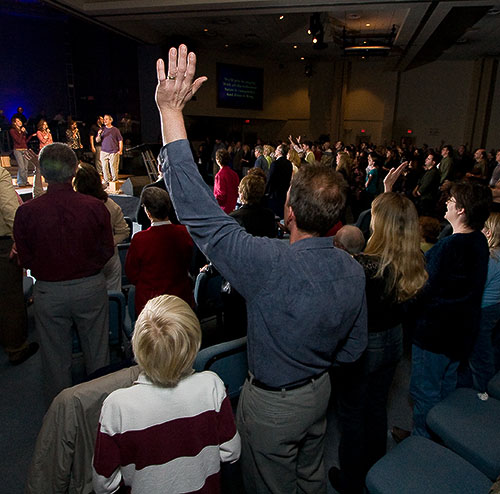 That's not to say radio triggers are never needed, only that the need to use them can be avoided by using the system as it was designed as a photojournalistic tool in dynamic situations, not as a substitute for static studio lighting with large modifiers.
The decision to add TTL radio triggers can add $500-$1,000 or more to the cost of the flash system. Unless you are a lottery winner with money to burn you might want get past the hyperbole and consider whether or not the range of the Canon system is adequate for your needs. That will depend in large part how you plan to use it. A fundamental fact of life for using the Canon system is that you can't block the sensor on the slave. Line of sight isn't always needed indoors were light reflects around the room, but is needed outdoors for reliable control of the slaves. If you opt to use a large modifier which blocks the slave sensor or must position it where direct sun will hit it the system will not work.
Canon didn't design the EX system as a "hammer that fits all size nails". It is designed as a lightweight portable solution where there is only 25-50' between Master and Slave with no or small modifiers. It is ideal for tasks like shooting candids at events like wedding receptions. It is less than ideal for tasks like portraits with large modifiers or shooting groups due to its design and power limitations.
I have used my pair of 580ex flashes since 2005 and have only run into a few situations where I had signaling problems because I understand what is required to make the system work effectively. My other Canon tutorials will give you a good idea of what the built-in signaling is capable of. I would suggest you resist the urge to buy radio triggers for one or two charge card cycles and in the interim get a pair of Canon speedlights, read my tutorials and learn how to use them. By the end of the first month you'll have a good idea whether or not you really need to spent that extra money on the radio triggers or not.
What many beginners don't realize is that ETTL isn't very good at most tasks. In almost any situation where you put the lights on two fixed stands or use large modifiers the shot-to-shot consistency of manual flash is a better choice that ETTL which guesses exposure with each shot based on how the scene reflects light. Just the subject turning their face to the lights differently will change the exposure. That argues against spending $2,000 for speedlights and TTL radio triggers.
If you already have one Canon 430ex flash before spending $500 on TTL radio triggers to move it off camera you should stop and consider that for about the same money you can buy a 580exII, OC-E3 cord and bracket and have a two light solution which is far more portable and versatile.
I you are already using a pair of speedlights as Master/Slave and encountering signaling problems due to the modifiers blocking the slaves you might want to consider keeping the speedlights as a portable solution with smaller modifiers and spend the TTL radio trigger money instead on a pair of studio mono-lights, cheaper manual radio triggers and a battery/inverter portable power source. Then you will have two sets of tools: studio lights for the "big nails" and a pair of speedlights for everything else.
That's not to say radio triggers are never needed, only that the need to use them can be avoided by using the system as it was designed as a photojournalistic tool in dynamic situations, not as a substitute for static studio lighting with large modifiers.
The decision to add TTL radio triggers can add $500-$1,000 or more to the cost of the flash system. Unless you are a lottery winner with money to burn you might want get past the hyperbole and consider whether or not the range of the Canon system is adequate for your needs. That will depend in large part how you plan to use it. A fundamental fact of life for using the Canon system is that you can't block the sensor on the slave. Line of sight isn't always needed indoors were light reflects around the room, but is needed outdoors for reliable control of the slaves. If you opt to use a large modifier which blocks the slave sensor or must position it where direct sun will hit it the system will not work.
Canon didn't design the EX system as a "hammer that fits all size nails". It is designed as a lightweight portable solution where there is only 25-50' between Master and Slave with no or small modifiers. It is ideal for tasks like shooting candids at events like wedding receptions. It is less than ideal for tasks like portraits with large modifiers or shooting groups due to its design and power limitations.
I have used my pair of 580ex flashes since 2005 and have only run into a few situations where I had signaling problems because I understand what is required to make the system work effectively. My other Canon tutorials will give you a good idea of what the built-in signaling is capable of. I would suggest you resist the urge to buy radio triggers for one or two charge card cycles and in the interim get a pair of Canon speedlights, read my tutorials and learn how to use them. By the end of the first month you'll have a good idea whether or not you really need to spent that extra money on the radio triggers or not.
What many beginners don't realize is that ETTL isn't very good at most tasks. In almost any situation where you put the lights on two fixed stands or use large modifiers the shot-to-shot consistency of manual flash is a better choice that ETTL which guesses exposure with each shot based on how the scene reflects light. Just the subject turning their face to the lights differently will change the exposure. That argues against spending $2,000 for speedlights and TTL radio triggers.
If you already have one Canon 430ex flash before spending $500 on TTL radio triggers to move it off camera you should stop and consider that for about the same money you can buy a 580exII, OC-E3 cord and bracket and have a two light solution which is far more portable and versatile.
I you are already using a pair of speedlights as Master/Slave and encountering signaling problems due to the modifiers blocking the slaves you might want to consider keeping the speedlights as a portable solution with smaller modifiers and spend the TTL radio trigger money instead on a pair of studio mono-lights, cheaper manual radio triggers and a battery/inverter portable power source. Then you will have two sets of tools: studio lights for the "big nails" and a pair of speedlights for everything else.
Holistic Concepts for Lighting
and Digital Photography
This tutorial is copyrighted by © Charles E. Gardner.
It may be reproduced for personal use, and referenced by link, but please to not copy and post it to your site.
You can contact me at: Chuck Gardner
For other tutorials see the Tutorial Table of Contents